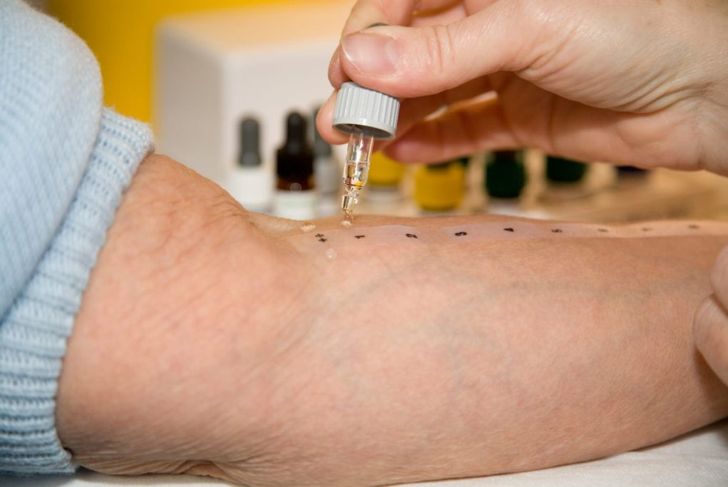Most people with allergies have mild or moderate reactions, with the worst symptoms being a rash, nasal congestion, or watery eyes. Some allergic reactions, however, are so severe that they lead to anaphylaxis. This medical emergency affects multiple body systems. The onset is relatively quick after exposure to the allergen, and it can rapidly progress to anaphylactic shock and respiratory collapse.
Allergic Reactions vs. Anaphylaxis
An allergic reaction is an immune response to a trigger. Allergic reactions generally occur in one location, presenting as an isolated rash where the person came into contact with an allergen or a runny nose and itchy eyes from breathing in pollen or cat dander. Anaphylaxis is more severe; it involves multiple areas of the body at the same time.
Physiology
Both allergic reactions and anaphylaxis reactions are IgE mediated. The immune system produces immunoglobulin E or IgE in response to an allergen. The antibodies then travel throughout the body, releasing chemicals that elicit a response. Everyone’s IgE antibodies are different, which is why some people have mild allergies to pollen while others have life-threatening reactions to peanuts or shellfish.
Chemical Mediators
Many specific chemical mediators cause anaphylaxis, and each has a different effect on the body. For example, histamine causes vasodilation and hyperperfusion, which leads to an increased heart rate. Prostaglandin D constricts the airway and causes the peripheral blood vessels to dilate. Leukotrienes also cause airway changes and increase vascular permeability, which allows for the increased passage of fluids through the tissues.
The First Hour
Anaphylaxis typically begins as a mild allergic reaction. Primary symptoms may include hives or an itchy rash, but not always. Sometimes, symptoms do not appear until after respiratory symptoms have already started. The first hour after exposure is the most dangerous for someone experiencing the event, and this is when about half of the fatalities from anaphylaxis happen. The faster the reaction progresses, the more severe it is. Early and aggressive treatment is needed to reduce the risk of complications.
Symptoms
Because symptoms of anaphylaxis occur suddenly and rapidly progress, knowing what they are is key to getting treatment right away. Symptoms that can quickly progress to something more serious include hives, swelling, difficulty breathing, nausea, vomiting, fainting, low blood pressure, and rapid heart rate. People who have experienced one severe reaction are at risk for events in the future, and the second may be worse than the first one.
Treatment
If someone is experiencing anaphylaxis for the first time, it is a medical emergency, and they or someone with them should call 911 right away. Epinephrine is the treatment for an allergic reaction — it can stop the progression to anaphylaxis. Doctors typically prescribe epinephrine to people who have experienced anaphylaxis previously. These people carry around a small injector to self-administer the drug if they experience anaphylaxis again. These shots work quickly, and a second injection may be required, depending on the severity. Anyone who has an allergic reaction that requires self-medication should still call 911 or see their doctor.
Diagnosis
Anaphylaxis is diagnosed based on symptoms. Getting a diagnosis is necessary so that the person knows what caused the reaction and can avoid it in the future. An allergist can test for specific allergens with either a skin test or a blood test. In the former, the doctor places small amounts of the suspected allergen on the skin to see if there is a reaction. A blood test confirms anaphylaxis by measuring tryptase, an enzyme released during the reaction, but this will only help with a diagnosis if performed in the first few hours after the event.
Common Triggers
Everyone has different IgE antibodies, but some common allergens lead to anaphylaxis in many people. Food allergies are the most common trigger. Peanut allergies make up 45 percent of all food allergies that lead to anaphylaxis, with tree nuts and seeds at 19 percent and milk at 10 percent. Reactions to drugs, blood products, latex, and insect stings are also relatively common.
Future Management
Once someone experiences anaphylaxis, it is likely to happen again, which is why it is essential to know what triggered it. The best way to avoid anaphylaxis is to avoid the trigger. A skin test can determine specific allergens if the person is not sure what led to the reaction. Being prepared with epinephrine is key to treating accidental exposures and wearing a bracelet identifying allergens can be beneficial in case of emergency.
Prognosis
When anaphylaxis is caught and treated early, the risk of complications is low. The first hour is the most important and as long as treatment is initiated in that time, the prognosis is very good. Most cases of anaphylaxis do not require hospitalization, though the patient may be observed in the emergency room for a few hours after being brought in to ensure that no further intervention is necessary.

 Home
Home Health
Health Diet & Nutrition
Diet & Nutrition Living Well
Living Well More
More




















